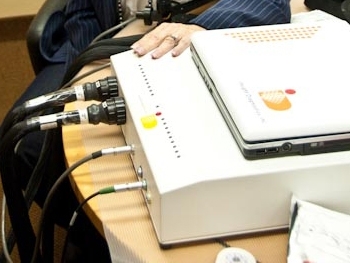Musculoskeletal Disorders (MSDs) represent 28% of all recordable OSHA injuries and account for 33% of the total cost of work-related injuries. Each recordable OSHA musculoskeletcal disorder involving lost time results in an average of 20 or more lost work days, compared to 9 lost work days for all other recordable injury types. Since the enactment of OSHA in 1970, the regulations have evolved to increasingly focus on the reduction of job hazards potentially leading to fatalities, amputations, and other serious injuries. Accordingly, a significant decline in the number of those types of injuries is evidenced in OSHA's records. However, muskuloskeletal disorders and other "soft tissue" injuries continue to plague workers and their employers with no indication of decline.
In fact, all indications point to an increase in muskuloskeletal disorders given that the percentage of workers ages 55-64 will increase by 36% during the next 5-year period while the percentage of workers under the age of 25 will decline. Obviously, older workers are more susceptible than younger workers to work-related muskuloskeletal disorders because of decreasing functional capacity due to degenerative conditions, pre-existing conditions and old injuries. Also troubling about this muskuloskeletal disorder injury forecast is the fact that older workers require longer recovery periods, inevitably driving up direct medical and disability costs. Indirect costs include overtime, training, and lost productivity related to injured workers' inability to perform their normal work. According to OSHA, for every $1 of medical-only claims, employers sustain $4.50 in indirect, uninsured costs.
Safety is an investment in future profitability for every employer and the well-being of every worker. However, an employer must exercise caution in its safety programs so as to avoid OSHA's anti-discrimination policies. Recently, Richard Fairfax, OSHA's Deputy Assistant Secretary, issued a memo addressing employers' safety incentive programs and suggesting that some such programs are merely a pretense to save workers' compensation costs and actually resulting in discriminatory disincentive policies and practices. Fairfax's memo emphasizes that a worker's reporting of a claim is a protected act, and identifies four approaches that potentially expose the employer to discriminatory practices:
- Taking disciplinary action against injured workers;
- Penalizing injured workers for failure to timely report an injury;
- Penalizing injured workers for violation of safety rules; and,
- Implementing certain performance incentive programs.
Under OSHA, Section 1904.4 (Recording Criteria) the employer must ascertain whether a work-related injury or illness has occurred, and if so, record the appropriate report with OSHA. If the employer is uncertain about whether an actual injury or illness has occurred, the employer may refer the worker to a physician or other health care professional for evaluation. The employer may then consider the health care professional's opinion in determining whether a recordable injury or illness exists.
One vehicle to objectively identify work-related injuries is the Electrodiagnostic Functional Assessment (EFA) Soft Tissue Management baseline program. The Electrodiagnostic Functional Assessment Soft Tissue Management baseline program is the proven non-discriminatory solution to OSHA compliance in the area of muskuloskeletal disorders. This program involves pre-injury soft tissue testing of workers that provides an objective baseline for later reported muskuloskeletal disorder injury claims. When the post-loss Electrodiagnostic Functional Assessment is compared to the baseline EFA, objective evidence is generated to determine if there is an acute injury arising out of the course and scope of employment. If no change is documented, there is no claim and thus, no reportable OSHA incident. Furthermore, no state or federal statues are triggered if evidence shows no sustained injury.
Conversely, if a change is documented, the employer is alerted to a recordable OSHA injury, and can reliably report the muskuloskeletal disorder in compliance with OSHA. More importantly, the Electrodiagnostic Functional Assessment further provides recommendations for site-specific and appropriate muskuloskeletal disorder treatment, resulting in quicker worker recovery, expeditious return-to-work, efficient compliance with OSHA's work readiness requirements, and, ultimately, limiting the employer's exposure and costs.
For more information about the Electrodiagnostic Functional Assessment Soft Tissue Management baseline program, contact the author at MReaston@emergedx.com or 702.234.1014.





